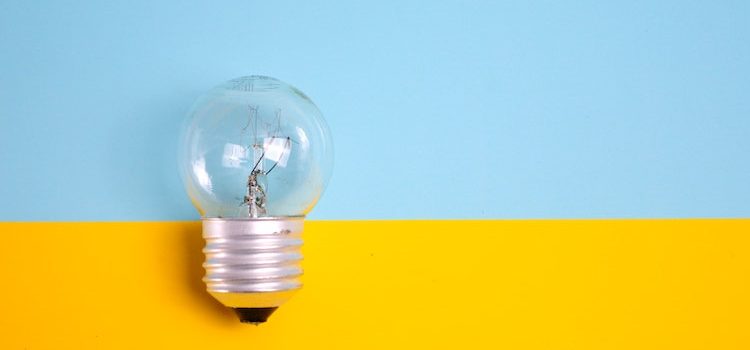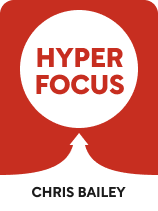

This article is an excerpt from the Shortform book guide to "Hyperfocus" by Chris Bailey. Shortform has the world's best summaries and analyses of books you should be reading.
Like this article? Sign up for a free trial here .
What is the Zeigarnik effect? How can you leverage it to be more creative?
Creative insights might seem random, but you actually can deliberately spark them by leveraging a peculiar neural phenomenon called the Zeigarnik effect. It’s when your brain continues to work on unsolved problems—even when you don’t realize it.
Here are four ways to unleash your creativity using the Zeigarnik effect.
Creativity and the Zeigarnik Effect
By improving the quality of the information you consume, you’re able to have higher-quality ideas. But how do you actually have those ideas? Most people assume that creative insights happen randomly. However, Bailey explains that you can intentionally trigger creative insights thanks to what psychologists call the Zeigarnik effect.
The Zeigarnik effect is the name for a peculiar neural phenomenon: We remember things we haven’t yet completed much better than things we’ve completed. Thanks to the Zeigarnik effect, your brain continues to work on problems you haven’t yet solved—even if you’re not actively working on them.
(Shortform note: One paper notes that, despite the Zeigarnik effect’s popularity in productivity books, most modern psychology books don’t mention it because researchers haven’t been able to replicate it reliably. Studies that support the Zeigarnik effect suggest that it relates to motivation: People motivated by feeling successful remember incomplete tasks better because they need to complete them to achieve their goal. However, the Zeigarnik effect is not a universal phenomenon.)
As you’re subconsciously working on this problem, your brain encounters various stimuli. It automatically tries to connect all of these stimuli to this problem. These stimuli might be external (like the apple that fell on Isaac Newton’s head). If your mind is wandering, these stimuli might be internal—like an old memory you haven’t thought of in a while. (Shortform note: A falling apple definitely triggered Newton’s theory of gravity—but there’s no evidence to suggest it fell specifically on his head.) Sometimes, the stimulus your brain encounters reminds it of something else it already knows. It connects this old information (or the new stimulus, which may itself be the information you were missing) to your problem—and solves it.
When your mind wanders, you encounter many more stimuli because you think about many more things. The more stimuli you encounter, the higher the likelihood you encounter the stimulus you need to solve your problem, so the more likely it is you’ll gain a creative insight.
If you mind-wander intentionally, you’re far more likely to notice and remember this creative insight. Furthermore, when you perform a fun, easy task as you mind-wander, you maximize the stimuli you encounter: You experience both external stimuli (from doing the task) and internal stimuli (the thoughts you have as your mind wanders). Therefore, intentionally mind-wandering in the right situations can increase your likelihood of having and remembering a creative insight.
4 Strategies for Triggering Creative Insights
Design such situations yourself using Bailey’s strategies.
#1: Intentionally Mind-Wander in Busy Environments
As we’ve seen, you need new stimuli to trigger a creative insight. So maximize your chances of having a burst of inspiration by maximizing the external stimuli you encounter. Bailey recommends intentionally mind-wandering someplace you’ll regularly encounter new cues—like a train station or a busy café.
(Shortform note: “Where’s the Spark? How Lockdown Caused a Creativity Crisis” describes how COVID-19 caused a loss in creativity partly because people weren’t exposed to new experiences. If your company still works from home, expanding your weak-tie network through cross-departmental collaborative projects might be a good way to increase new stimuli: Chance comments from “weak ties” can be the source of unexpected inspiration.)
#2: Manipulate the Zeigarnik Effect
Bailey explains that there are two main ways you can manipulate the Zeigarnik effect.
- If you’re stuck on a specific problem write it down.
- Stop your task in the middle.
Both methods ensure that your problem or task remains in the back of your mind. Writing down your problem helps you remember the problem. (Shortform note: Bailey doesn’t offer evidence to support this claim. Many studies indicate that handwriting improves your memory, but typing doesn’t have the same effect—so Bailey’s strategy may only work if you handwrite your problem.) And stopping your task in the middle works because the task leaves behind mental residue, so your mind continues to work on it even if you’re not actively doing the task. (Shortform note: Stopping your task in the middle likely works best if you’re able to let your mind wander for a while. As you may recall from our discussion of hyperfocus, if you still have mental residue from a task in your working memory when you need to hyperfocus, the mental residue will distract you and you won’t be able to hyperfocus as well.)
When you move onto a fun but easy task and let your mind wander, the Zeigarnik effect ensures that your brain will try to connect all the stimuli you encounter to the unsolved problem or the incomplete task. So by mind-wandering after writing down your problem or stopping your task in the middle, you increase the number of connections your brain tries to make with your problem or task. The more connections your brain makes, the more likely it is to make a useful connection.
(Shortform note: Like Bailey, Oakley argues that you can switch to diffuse-mode thinking (which is similar to intentional mind-wandering) to work out a creative solution to a problem. But Oakley’s technique has one important caveat: She argues that in order for your mind to best come up with a creative insight, you can no longer be consciously thinking about the problem—which can take several hours. Bailey makes no such claim; in fact, the problem-solving mode we saw earlier uses the exact opposite logic since you need to repeatedly bring your mind back to the problem you’re working on.)
#3: Delay Your Decision
As we’ve seen, the more you hyperfocus, the less your mind wanders—and the harder it becomes to trigger a creative insight. One strategy Bailey recommends if you regularly hyperfocus is to wait as long as possible when making creative decisions. The more time you give your mind to wander, the more stimuli your brain will encounter and the higher the possibility you’ll come up with an innovative solution. (Shortform note: Of course, there are famous examples of people coming up with creative solutions under high time pressure. But one study’s Time-Pressure/Creativity Matrix suggests this is exceedingly rare and almost exclusively when people feel a sense of purpose and urgency about their task.)
#4: Sleep on It
You might argue that sleeping is a biological necessity and doesn’t count as intentional mind-wandering. But Bailey argues that dreaming is “scatterfocus on steroids,” noting several famous examples of great ideas humans had in their sleep. (Shortform note: One he doesn’t mention is Mary Shelley, who dreamt up her gothic classic Frankenstein during an afternoon nap.) He also cites a study indicating that REM sleep in particular allows your brain to make the connection it needs to find a creative insight. (Shortform note: REM sleep is also important for sleep quality: The 4-Hour Body suggests that the higher the ratio of REM sleep to total sleep, the more restful your sleep.)
Bailey suggests that dreaming may trigger creative insights because sleep is so neurally similar to intentional mind-wandering. Both intentional mind-wandering and sleep energize us. Random neurons fire both when we sleep and when we mind-wander intentionally, which leads to breakthrough ideas. Our brains consolidate information during both brain modes. Our minds wander to similar areas during both modes, including the past, the future, and our relationships with other people. However, Bailey admits that our minds jump much more between these areas when we mind-wander intentionally.
(Shortform note: Why might sleep be so neurally similar to intentional mind-wandering? Perhaps it’s because dreams come from activity in the brain’s “default network,” which is most active when we daydream, too.)
So how can you use sleep to intentionally trigger a creative insight? Bailey recommends asking yourself important questions and going over information you want to remember just before you go to sleep. He posits that this will cause your mind to wander around these topics while you sleep—so you could wake up with a new creative insight.
(Shortform note: If you use this technique, keep a notebook on your nightstand to capture these insights. After all, most of us forget our dreams as soon as we wake up. Keeping a dream journal can also help you learn from your mistakes.)

———End of Preview———
Like what you just read? Read the rest of the world's best book summary and analysis of Chris Bailey's "Hyperfocus" at Shortform .
Here's what you'll find in our full Hyperfocus summary :
- Why it's just as important to learn how to manage your attention, along with your time
- Why you still feel tired no matter how many breaks you take
- Strategies for managing your attention for better productivity and creativity






